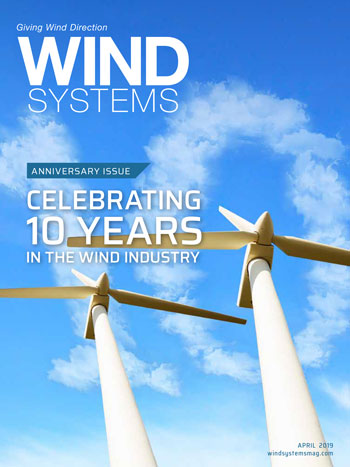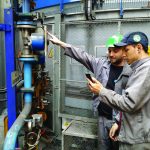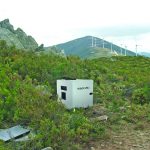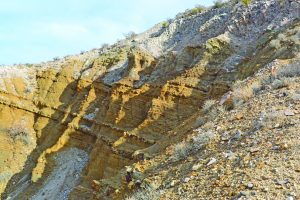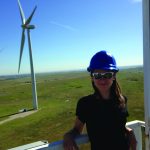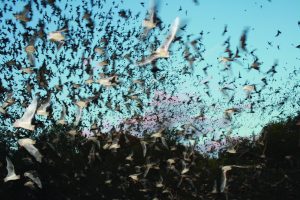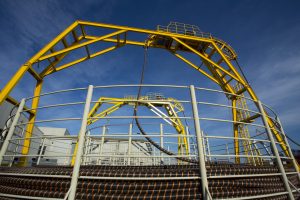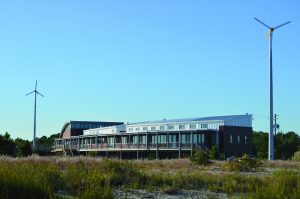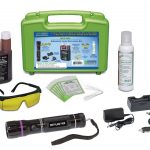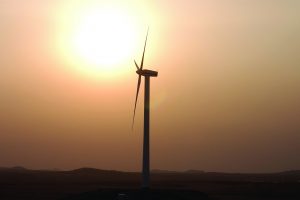Lightning and tall objects don’t really play well together.
And since wind turbines are, by their very nature, extremely tall, that means nature often uses these massive energy producers for target practice.
Those lightning hits can cause turbine damage ranging from the inconvenient to the catastrophic.
Being able to identify where lightning has hit in proximity to a wind farm — and doing it quickly — is vital to making sure repairs can begin as soon as possible.
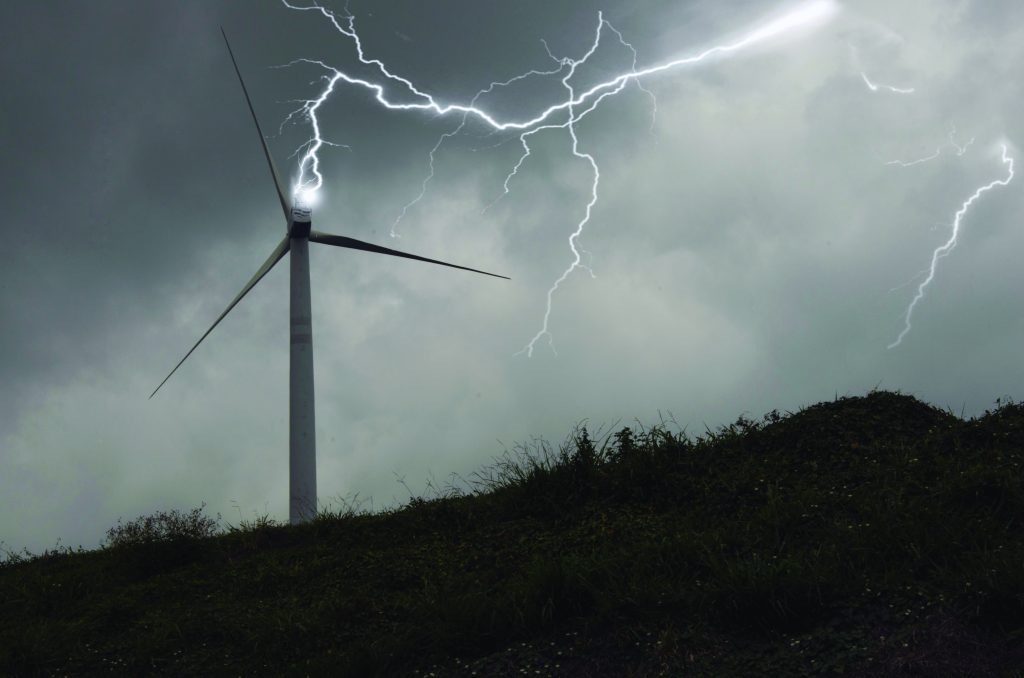
Lightning experience
New technology from Vaisala has been essential to helping detect those lightning events and their severity.
“We’ve been detecting lightning for 30 years,” said Brooke Pearson, lightning global solutions manager with Vaisala. “Vaisala lightning technology is used all around the world.
Across the USA, we have a lightning network called the National Lightning Detection Network, or the NLDN, that’s owned and operated by Vaisala. Essentially, what we have are a number of sensors uniformly dotted around the USA, and what they’re doing is detecting the electromagnetic waves emitted by all lightning events.”
Although Pearson’s role with Vaisala is to understand the needs of the marketplace, in this case, wind farms, that understanding also encompasses the needs of the National Weather Service, the military, and others.
Lightning is a fact of life and nature, and as wind turbines continue to get larger, it’s important to know how often lightning forces its way into the equation.
While thunderstorms can vary in size and intensity, NOAA reports there are about 100,000 thunderstorms in the U.S. annually, and Vaisala’s National Lightning Detection Network records about 70 million cloud-to-ground lightning strokes in the U.S. every year.
About 75 percent of lightning is cloud lightning. It’s the other 25 percent — the cloud-to-ground lightning — that is of most concern to wind-farm operators.
Blade damage
Some of the more common damage that lightning inflicts on turbines involves the blades, according to Pearson.
“That can be a drastic lightning strike, and I’m sure you’ve seen some of the images where you see a blade has virtually been blown off by a lightning strike, and it might have some dramatic fire associated with it,” he said. “That’s a huge problem obviously, but I think the more problematic situations are those involving more minor damage caused by lightning, which can go undetected and perhaps lead to a deterioration of a blade as time goes on.”
This can affect power production, as well as the massive cost to replace a damaged blade, according to Pearson. Once the costs of cranes and shipping and everything else associated with it are factored in, the total cost can reach $200,000 or more.
Continuing current lightning
While Vaisala’s lightning technology has been detecting lightning for three decades, what the recent advancement brings to the table is the ability to distinguish and detect “continuing current” lightning, Pearson said, which has the capacity to inflict the most damage on a wind farm’s assets.
But what makes continuing current lightning so much more of a problem?
“It’s a good question that everyone’s been looking at,” Pearson said. “The reality is that a lightning strike normally only lasts several 10s of microseconds, which is an absolutely small fraction of time. Whereas, these continuing current events can last up to a thousand times that period. They can last for a few 10s of milliseconds.”
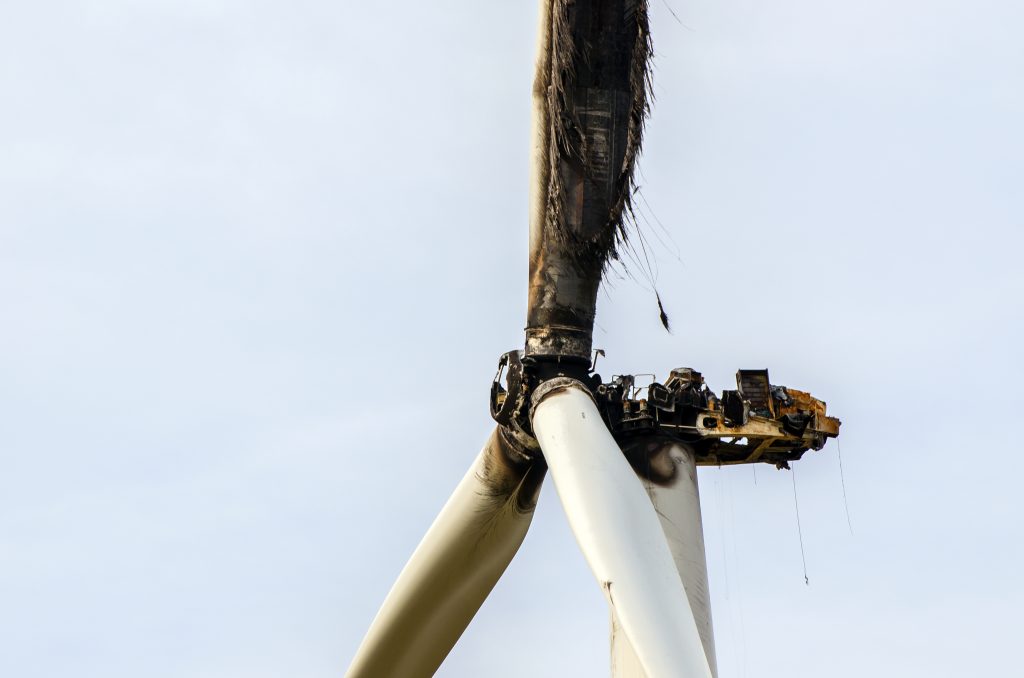
That time differential may not be detectable by human senses, but it can make quite a difference in the amount of damage that can be done, according to Pearson.
“The analogy that I’ve used is: Imagine a red-hot poker,” he said. “If someone touched it to your skin very briefly, it would hurt, but you’d live. If someone held it to your skin for a much longer period of time — and it wouldn’t have to be very much longer — you’re talking about severe damage. That’s one of the ways that I try and explain the difference between a normal lightning strike and one that has continuing current.”
Lightning strikes with continuing current make up about 5 percent to 10 percent of lightning strikes, according to Pearson.
“It’s only a small fraction, but it is the fraction that’s likely to cause the most damage, because there is a huge transfer of electric charge and, consequently, a huge generation of heat,” he said.
Detecting events
The basic concept of Vaisala’s technology is simple, although the methodology is quite complex, according to Pearson. The lightning network locates lightning events using a combination of direction finding, similar to triangulation, and a technique called time-of-arrival.
“Imagine you drop a pebble into a still pond of water,” he said. “You’ll know that the waves will ripple out from that pebble. Think of that pebble as lightning and those waves being electromagnetic waves instead. What we’re doing is, at various points in that pond, we’re detecting those waves. Because each lightning event has a unique electromagnetic signature, we can pinpoint within 100 meters or so of where that lightning actually occurred by comparing the precise time the wave hits each sensor.”
The lightning network is able to advise people on the amplitude of the lightning current as well, according to Pearson.
“It identifies the peak current in kiloamps,” he said. “A lightning strike can range from a few kiloamps up to the real big ones up to 300 kiloamps. You wouldn’t want to be in the way of that, by the way.”
Most cloud-to-ground lightning that might affect wind-farm assets is going to be in the range of 15 to 20 kA, according to Pearson. The lightning events with the higher magnitudes are the ones that are often flagged by asset managers because those are assumed to be the ones that cause the most damage. Ironically, continuing current tends to be associated with the lower magnitude lightning events.
Satellite assistance
“Actually, these events with continuing current can cause huge amounts of damage,” he said. “The way we identify those is by combining our ground-based detection technique with data from the relatively recently launched satellite. There’s a lightning sensor, which is carried on GOES (Geostationary Operational Environmental Satellite) that was launched by NASA and NOAA. It’s looking down on a large area including the USA. It is looking at the optical signal emitted by lightning, so different to our ground-based lightning detection.”
Using that information, the satellite is able to determine the duration of the lightning event, and the Vaisala technology determines if it is a cloud-to-ground lightning strike as well as detecting precisely where it struck the ground, according to Pearson.
“Put the two bits together, and we can determine which strikes have continuing current,” he said.
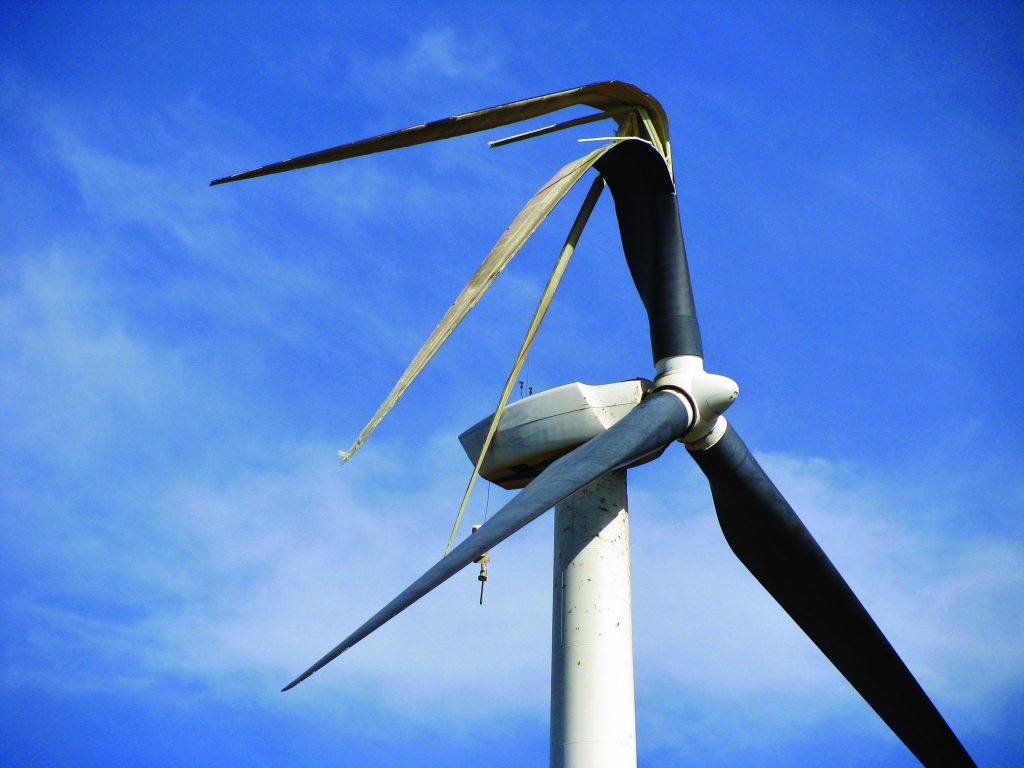
Although lightning can cause power surges that can be harmful to a turbine, most lightning damage occurs from dramatic heating of the composite blade materials, according to Pearson.
“I think the primary issue on a wind farm is really about the blade damage, with some justification,” he said. “If the wind farms are responsible for transformers and other electrical equipment around, I think they would be concerned about lightning’s impact on those assets. It is really critically important that they apply high-quality surge and lightning protection. Voltage spikes can cause big problems.”
Large-scale detection
Some wind turbines are equipped with lightning detection sensors; however, Vaisala’s technology can go beyond a predetermined location, according to Pearson.
“The huge advantage of the way we are detecting lightning is that we can do it on a very large scale and with great accuracy,” he said. “Our detection capability, the National Lightning Detection Network, actually covers the whole of the USA. We, by the way, also have a global network that detects lightning all across the globe. It’s similar, but slightly different, technology, which means that we can do the same exercise in South America, for example. The issue is satellite coverage with respect to this continuing current capability.
You need the satellite component for continuing current. We can detect lightning everywhere, but for the continuing current, we need to have the satellite’s lightning data to add that extra bit of information.”
As the technology gets rolled out, Pearson said wind-farm operators and others in the industry are interested in implementing it.
“We’ve talked to a number of organizations in the wind industry,” he said. “Our intention is to release this to the industry in a few months’ time. We’re looking to make it available for this coming lightning season. There are many wind-farm operators who use our lightning data already, and we’ll be able to talk to these organizations about it and how they can use this new information in the tools they already have.”
Lightning season
With lightning season in the U.S. starting to ramp up in March and April, Vaisala’s technology will be useful to wind farms that dot the landscapes of Texas, Oklahoma, and Kansas, to name a few.
“Many of these wind farms might have several hundred wind turbines,” Pearson said. “When you get a thunderstorm come through, you might have thousands of lightning strikes potentially impacting these hundreds of wind turbines, and they really need to determine fairly rapidly which ones are likely to have been damaged. They need to be able to manage their maintenance crews. It’s a massive job to maintain and inspect these units, and they need to do it quickly and focus on those most likely to have been damaged to avoid further damage in the future, and loss of revenue from power interruptions.”
And as the technology is introduced, Pearson said he thinks it will improve the efficiency of how the turbines are inspected and maintained.
“I think the more we can understand the impacts of lightning on wind turbines and wind farms, then that efficiency increase is going to make a difference to the way decisions are made,” he said. “A lot of it is about having the information, but it’s also understanding the information.”
More info www.vaisala.com



















